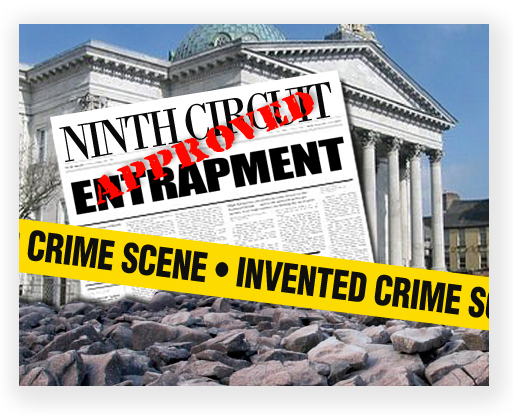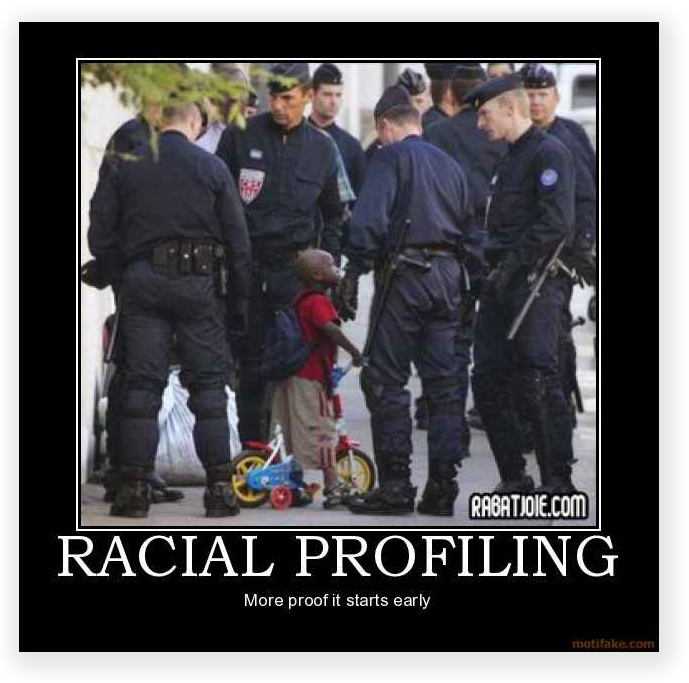We’re still doing a weekly newsletter … we’re just posting pieces of it every day. The news is fresher this way …
BLACK DEFENDANTS MATTER
We’re already familiar with the criminal enforcement activities of the Bureau of Alcohol, Tobacco, Firearms and Explosives (ATF). In a post last month, we wrote about the popular stash house sting:
“Here’s how the sting works. The ATF agent starts with an informant, who introduces an undercover agent to some “homies” (and, make no mistake, “stash house robbery” sting defendants are overwhelmingly poor and black). The undercover agent tells the boys in the ‘hood about a “stash house” he knows of containing five, 10, even 20 or more kilos of cocaine, and convinces them show up at a specific time and place with guns to rob the place. The defendants are enticed: it seems like easy money, a lot of easy money. They all show up at the staging area, agents arrest them, and they get charged with a drug possession conspiracy and gun offenses. Mandatory minimum sentences usually start at 20 years.”
It turns out that our suggestion that the ATF preferred defendants of color for such stings was not far off the mark.
 After USA Today found that over 91% of defendants recruited into ATF stash house stings in 2014 were minorities, the backlash against the practice has been growing almost as fast as the government’s scramble to keep the data out of the hands of defendants and the public.
After USA Today found that over 91% of defendants recruited into ATF stash house stings in 2014 were minorities, the backlash against the practice has been growing almost as fast as the government’s scramble to keep the data out of the hands of defendants and the public.
 A federal judge in southern California ruled earlier this year that the ATF entrapped defendants for a “fictitious crime” they wouldn’t otherwise have committed. A previous case in Los Angeles was dismissed for the same reason in 2014, but the 9th Circuit – despite its misgivings – ruled that Circuit precedent required its reinstatement.
A federal judge in southern California ruled earlier this year that the ATF entrapped defendants for a “fictitious crime” they wouldn’t otherwise have committed. A previous case in Los Angeles was dismissed for the same reason in 2014, but the 9th Circuit – despite its misgivings – ruled that Circuit precedent required its reinstatement.
Defense lawyers in three states have asked judges to DOJ to turn over records they intend to use to prove racial bias claims against stash house stings. Last year, U.S. District Court Judge Ruben Castillo, agreed and ordered lawyers from the U.S. Attorney’s Office for the Northern District of Illinois to turn over statistical information, saying there was a “strong showing of potential bias.”
Justice Department lawyers have fought to block the disclosures. In another Chicago case, the U.S. Attorney refused to comply with discovery, solely to get the indictment dismissed so it could appeal. The 7th Circuit reinstated the indictment, but noted that “the racial disproportion in stash-house prosecutions remains troubling, however, and it is a legitimate reason for discovery…”
A motion to dismiss because of selective prosecution/enforcement has been filed in United States v. Williams, again before Judge Castillo. Last Friday, the defendants’ expert witness filed his disturbing findings.
 The expert witness, a law professor and professor of epidemiology at Columbia University, found that the chances that all but one of the defendants in ATF stings from 2006 to 2013 would be minorities – if they were deliberately picked because of their minority status – were under 1-in-1000. He concluded that “ATF engaged in nearly exclusive recruitment of non-White persons over a three-year period from 2011-2013. From 2011-2013, the selection of only one White defendant among the 57 Stash House defendants recruited in that period suggests that Black and Hispanic persons were targeted for selection by the ATF.”
The expert witness, a law professor and professor of epidemiology at Columbia University, found that the chances that all but one of the defendants in ATF stings from 2006 to 2013 would be minorities – if they were deliberately picked because of their minority status – were under 1-in-1000. He concluded that “ATF engaged in nearly exclusive recruitment of non-White persons over a three-year period from 2011-2013. From 2011-2013, the selection of only one White defendant among the 57 Stash House defendants recruited in that period suggests that Black and Hispanic persons were targeted for selection by the ATF.”
He also found that many of the “Stash House defendants were recruited into the Stash House Program without having met the explicit criteria of violent crime set forth in ATF policy and guidelines. Many defendants also appear to fail to meet expanded offense criteria articulated by the ATF and prosecutors during the course of this litigation.”
The Bureau of Alcohol, Tobacco, Firearms and Explosives has more than quadrupled its use of stash house stings during the past decade, making them a central part of its attempts to combat gun crime. The operations are designed to produce long prison sentences for suspects enticed by the promise of pocketing as much as $100,000 for robbing a drug stash house that does not actually exist.
“There’s something very wrong going on here,” USA Today quoted University of Chicago law professor Alison Siegler as saying. Siegler, part of the team of lawyers challenging the ATF’s tactics in Williams, said, “The government is creating these crimes and then choosing who it’s going to target.”
Current and former ATF officials insist that race plays no part in the operations. Instead, they said, agents seek to identify people already committing violent robberies in crime-ridden areas, usually focusing on those who have amassed long and violent rap sheets. “There is no profiling going on here,” said Melvin King, ATF’s deputy assistant director for field operations, who has supervised some of the investigations. “We’re targeting the worst of the worst, and we’re looking for violent criminals that are using firearms in furtherance of other illegal activities.”
They just happen all to be minorities. Imagine that.
Motion to Dismiss for Racially Selective Prosecution/Enforcement, United States v. Williams, Case No. 12-CR-887 (N.D. Ill., filed Sept. 23, 2016)
Expert Exhibit To Defendants’ Motion To Dismiss For Racially Selective Law Enforcement, United States v. Williams, Case No. 12-CR-887 (N.D. Ill., filed Sept. 23, 2016)

